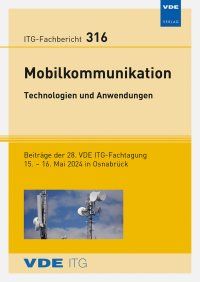Orthogonal Time Frequency Space for a Next Generation 5G Broadcast System
Conference: Mobilkommunikation - 28. ITG-Fachtagung
05/15/2024 - 05/16/2024 at Osnabrück
Proceedings: ITG-Fb. 316: Mobilkommunikation – Technologien und Anwendungen
Pages: 6Language: englishTyp: PDF
Authors:
von Beoeczy, Jonas; Reimers, Ulrich
Abstract:
Advancements in Long Term Evolution (LTE)-based 5G Terrestrial Broadcast technology have significantly improved physical performance, particularly for expansive coverage areas. Leveraging the LTE standard, this broadcast mode employs Orthogonal Frequency Division Multiplexing (OFDM), ideal for multipath scenarios. Traditional OFDM numerologies in LTE utilize a Cyclic Prefix (CP) of 16.67 mus with a subcarrier spacing Δ f of 15 kHz, limiting cell radii to just 5 km. To extend coverage to larger geographic areas and enable High Power High Tower infrastructures for LTE-based 5G Terrestrial Broadcast, longer CPs of up to 300 mus and shorter subcarrier spacings Δ f down to 370 Hz have been implemented. However, it is evident that such OFDM configurations struggle to support both expansive coverage areas and high mobility speeds within current technological constraints. Orthogonal Time Frequency Space (OTFS) modulation, known for mitigating high Doppler shifts, presents a promising solution. This paper introduces initial efforts to replace OFDM with OTFS in LTE-based 5G Terrestrial Broadcast implementations. The content is structured as follows: The background and development of mobile communication systems leading to Terrestrial Broadcast introductions are briefly introduced. Section II covers the basic principles of OFDM modulation and the LTE-based 5G Terrestrial Broadcast carrier. An overview of the delay-Doppler domain is provided in Section III. Section IV introduces our newly designed OTFS carrier structur for an enhanced LTE-based 5G Terrestrial Broadcast. Simulation results and conclusions are presented in Sections V and VI, respectively.


